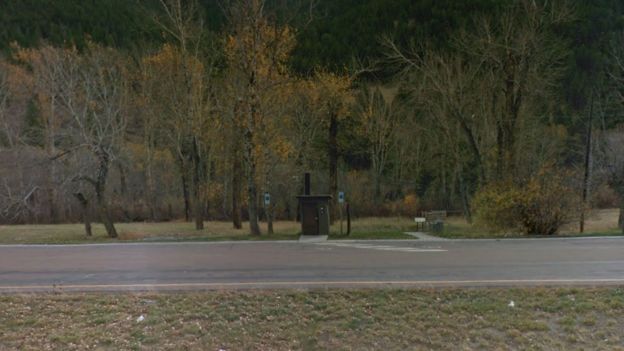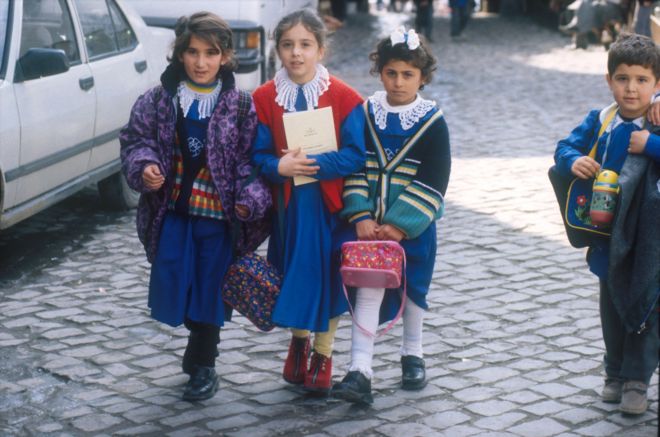6 Jan-2011(Mareeg.com-London-The peaceful amalgamation of the two Islamist factions Al Shabab and Hisbul Islam (HZ) is seen by some as a commendable act that will have significant postive ramification in the political landscape of Somalia. Others see it as the nightmare that they always dreaded to face; but at least over one million internally displaced persons (IDPs), who live in the IDP corridor of Afgoi, breathed a heavy sigh of relief. The IDPs and the business community, who were worried about where they will end up if the talks between Alshabab and HZ fail, were the first to welcome Al Shabab fighters into their humanitarian corridor.
The wholesale daily bombardment of the Bakara market by Amisom forces compelled the business community to move most of their merchandise to the IDP home of Afgoi corridor - the Bakara market is reduced to deal-making market. Al Shabab has laid its hands on a booming business that include telecommunications companies, power generators, merchandise warehouses and the likes that has the potential to build up their war coffers massively and as a token of good gesture they instantly wrapped up the check points hitherto manned by Hizbul Islam.
The popular assumption that Al Shabaab's takeover of Hizbul Islam came in an easy way runs contrary to the facts the two movement’s history preserved. The merger was delivered by lengthy negotiations often coupled at times by arm twists that started soon after the birth of Hizbul Islam in January 2009. Al Shabab movement has all along deemed that the Islamist Mujahidin’s strategic objective (creation of an Islamic state) could only be achieved rapidly by a unified front and hence never accepted the birth of a rival Islamist movement.
The merger of the two Islamists into one was the ultimate goal the insurgency was craving for and is a priceless victory for them and probably a welcome development for the communities who bore the brunt of the Islamist rivalry, as the alternative scenario of inter-Islamist bloodshed is a scenario no sane person would wish to imagine. The minimum would have been a war in Afgoi’s humanitarian corridor which would have uprooted over a million people.
Regardless of their archaic and strict interpretation of the Quran and the Sharia, the Islamists managed to institute one single movement to replace yester years’ countless warlords that destroyed the fabric of the Somali nation. The Al Shabab movement has more soldiers and firearms under one command which will be tested shortly at the battle fields –Amisom forces are finalizing the details of over ambitious offensive war aimed to taking back the important southern port city Kismayo port.
Hizbul Islam – ruined by irreconcilable ideologies (clan and Islam)
Hizbul Islam was born out of the merger of four ideologically discrete Islamic groups who only share the nationalist platform: Aweys' Alliance for the Re-Liberation of Somalia – Asmara wing; the Ras Kamboni Brigade; Jabhatul Islamiya (the Islamic Front); and the Anole brigade. Since Hizbul Islam’s inauguration in 2009, their relationship with Al Shabab was at best bumpy and at worst marked by battles that often Hizbul Islam lost not only sphere of Influence to Al Shabab forces but also resulted in the exposure of the ideological and political divide among the diverse groups that call Hizbul Islam home.
When Al Shabab forces, on 1st Oct 2009, ousted Hizbul Islam from the control of Kismayo, they exposed that Sheikh Ahmed Madoobe, the central pillar of Hizbul Islam in the Juba valley, was executing an agenda backed by Ethiopia, the TFG and Kenya. In the end, this scandal shattered the thin trust that held together the smaller factions that united under the umbrella of Hizbul Islam - The undoing of Hizbul Islam started back then. Despite repeated reiterations, Sheikh Aweys failed to convince the top officials of Hizbul Islam in Gedo, let alone the Ras Kamboni Brigade (an essential and organized faction, headed by Sheikh Hassan Turki),that Sheikh Ahmed Mohammed Madoobe is still part of his group.
Sheikh Hassan Al –Turki, who is on the hit list of the US government and is specialized in the training of the deadliest units of the Jihadist, severed his faction’s ties with Hizbul Islam. Sheikh Turki’s close associates allege poor health and shrewd machinations of Sheikh Madoobe compelled him to let Al Shabab swallow the Ras Kamboni Brigade. The ceremony of the merger of Al Shabab and Ras Kamboni Brigade was held in Baidabo on January 27, 2010 in the presence of Ahmed Abdi Aw Mohamed,”Sheikh Godane” the reclusive Al shabab spiritual and operational leader whose nom de guerre is Abu Mansor. Ever since, Sheikh Al-Turki is assumed to be enjoying retirement, albeit in poor health, in a safe care home somewhere around Kismayo.
Inside the executive committee of Al shabab: - leadership shake up is in the offing
The attack launched by the lone mystery helicopter, disowned by the west, on the house in Merca on 25 Sep, 2010, where Al Shabab leaders gathered to resolve a power dispute between the Amir and Mukhtar Rabow put in the public domain the power struggle within Al Shabab executive committee. The dispute was ignited by the poor performance of the movement following their over publicized Ramadan botched attempt of taking over the Presidential Palace. The attack of the helicopter can’t be uncharacteristic given that previous two commanders of Al Shabab – Ayrow and a Kenyan-born top Jihadist were killed by similar attacks.
The attack might have triggered mistrust and suspicions within the group and might have obliged them to suspend the talks prematurely. To dampen the report of leadership feud within Al Shabab, Sheikh Mukhtar Rabow delivered a speech in Mogadishu, on October 8, 2010, aimed at clearing the air and buying vital time for the movement to put its house in order. He termed the reports baseless and groundless, accusing the Transitional Federal Government of disseminating propaganda against what he called the “Mujahidin”.
The recent skirmish between the two factions in and around Bur Hakaba district, which is thought to have hastened the merger of the two groups, was a manifestation of the tactical difference among the leadership of Al Shabab. The confusion in the leadership of Al Shabab is set to linger around for long unless common unifying vision is found and drastic accommodative steps are taken by the feuding leaders to address the ever widening rift within the executive committee. Top leaders, Sheikh Fu’ad Shongol and Mukhtar Rabow, were against the inter- Islamist in-fight while the Amir of Al Shabab, who is seen as a sell out of the foreign Jihadists, was of the opinion that talks alone can’t deliver the desired end product in good time – unconditional merger of Hisbi Islam with Al Shabab.
On Friday December 17,2010 Sheikh Fu’ad Shanqol, thought to be speaking on behalf of the nationalist elements within Al Shabab led by Sheikh Mukhtar Rabow, delivered a fiery speech in Bakara Market Mosque. He attacked the Amir of Al Shabab’s line of thought and categorically denounced the Burhakaba fight that saw the death of twenty Mujahidin and the injury of over forty fighters from both sides. Sheikh Fu’ad branded it as un- Islamic and anti Jihad, an act that requires repentance of its instigators. Sheikh Fu’ad questioned the suitability of Sheikh Godane to hold the highest office when, as he put it, the Amir is incapable of showing his face to followers of the movement let alone partake in the Jihad and educate his foot soldiers.
From the time Al Shabab was founded, such publicized criticism of their leader in person has never been heard of. This departure from the blind acquiesce to the whims of the leader demonstrates that either the forces of moderation are dogged to take over the sovereignty of the movement from foreign-elements or it is a symptom of the tough times Al Shabab is facing due to sustained military attacks from Amisom – backed TFG.
On a different Friday December 24, 2010 Sheikh Fuad Shongol again delivered another speech in Afgoi appealing to Al shabab’s rank and file to stop lashing and imprisoning civilians for trivial offences that can easily be addressed through talking. He reminded them that Allah will turn away from the Mujahidin if they keep committing atrocities against the civilians. This again signifies a departure away from Al Shabab’s claim that their foot soldiers are all saints and infallibles.
Sheikh Fu’ad blamed the relocation of substantial number of civilians in to the government side on Al Shabab’s unresponsive policies towards aid agencies and restrictions on civil liberties in the face of wide spread drought and destitution. It is reported that People who were under areas controlled by Al Shabab chose to speak with their feet and crossed into the government-held areas, after they were traumatised by the draconian rules of the front and the indiscriminate daily shelling of AMISOM forces . The fleeing people bought or rented vacant lands to pitch their tents on, in and around Halane, former Somali Army training school, which is presently an AMISOM base. This is yet an indication of the bankruptcy of Al Shabab’s template assertion that “Al Shabab knows what is best for the people”. It is bold but tentative first step towards the religious moderation Al Shabab loves to hate.
The official participation of Al Shabab-controlled regions in the first football tournament for 21 years held in Puntland, an autonomous state hated by Al Shabab, marks another departure from their all out war policy. The condemnation by Sheikh Mukhtar Rabow of the assassinations of the local elites of Puntland puts a strong seal to the change of heart within some of the leading figures of Al Shabab, but it could also be a transitory populist machination intended to cope with their shrinking popularity.
The extremist group, which is bent on keeping the status quo, is showing their displeasure by imposing more draconian fatwas on people already burdened beyond belief by multitude of injudicious Fatwas. The moderates are beseeching diehard international Jihadists in Mogadishu and its vicinity to change course. However, the anti reform group, in an apparent rebuke of the soft approach of the moderates, introduced an immediate blanket ban on the trade and use of tobacco products – cigarette, Shisha, chewing tobacco – on the people in Hiiraan and Jowhar regions, who are already punished by a ruthless drought of a scale not seen for years.
As people were coming to terms with the cigarette ban, the anti-reform group closed all the pharmacies in Jowhar without exception and bundled the trained health workers on the back of battle wagons on their way to makeshift detention centre. The sight of women with small weeping and tired children strapped to their backs, looking for medications didn’t soften the heart of Al Shabab officers, who claim to be the senate of the religion of Allah. The crime that attracted such inhuman collective punishment of a whole community was simple daily occurrence - the pharmacists failed to show on time for a seminar called in by Al Shabab’s local health officer.
Can Al Shabab digest the absorption of Hizbul Islam?
The merger didn’t only strengthen the fire power of the new Al Shabab, but also brought with it an ideological baggage (Sh. Dahir Aweys) that is most likely to reinforce the position of the reformists. The reformist agenda is more of like a creeping revolution that encompass a thorough change of the movement including, but not limited to, revisiting military strategies, policies on civil liberties, relations with aid agencies and the likes. The soul of the movement, their local and foreign financiers, have a vested interest in keeping the movement as a going concern; and are most likely to use every means in their power to achieve peaceful amalgamation as they can’ afford an expensive failure at the 11th hour.
Sheikh Hassan Dahir Aweys has a byzantine influence in the ranks of Al Shabab, the business community and to some extend the pro government militias both in Mogadishu and beyond. By all calculations, the timing and the prevailing conditions within Al Shabab are on his side; he may not be the king but obviously he is the king maker. Far from joining his old comrade Sheikh Hassan Turki in a care home as suggested by Mr. Amin Amir, the Somali political catroonist, Sheikh Aweys might turn out to be the vehicle that may steer the movement into becoming inward-looking national Islamist group, without assuming an office higher than membership of one of the movement’s committees. Sheikh Aweys, throughout history, proved to thrive by working behind the scene – during UIC sheikh Sharif Ahmed not Sheikh Aweys was the front man, but key decisions were made by the latter.
Conclusion: - Al Shabab may get a new lease of life with human face
According to Faisal Roble, whose prediction on the merger between the two groups came into present day reality (VOA, Somali Section, interviewed in October, 2010), the power struggle within Al Shabab isn’t a calamity that befell the movement but is rather a blessing in disguise which is part and parcel of the natural growth of any movement.
The disagreements within the movement could have stemmed out of standard internal appraisal in which the leaders are made to take stock of their performance, their tactics, their relations with external parties and their shortcomings which is essential for the long-term success of the movement. It is also the case that historically rebel movement fractures when they are cornered militarily and politically – any venue short from dismantling the movements is bound to be explored even if it is the assassination of some of the executive committee. AlShabab’s division might have been caused by either of the two, or a combination of the said factors. However, optimistic Somalis hope that the growing voice of the elements seen as nationalists within Alshabab augurs hope of reconciliation.
What is indisputable is that Alshabab’s extremist policies and vision - internationalization of the national question, the agenda of the foreign Jihadists to make Somalia pan – Islamic caliphate that became the hallmark of current Al shabab leadership - has earned disaffection from many quarters of its supporters. It is unlikely that the proponents of the internationalist agenda will emerge winners out of this duel because people see the futility of their vision, which is a perpetual misguided Jihadist war with no end – Somalia now, Kenya and Ethiopia tomorrow and so on and on is becoming more of a pipeline dream.
Al shabab’s threat to attack America or Europe can’t be taken lightly because they can activate their sleeping cells to bomb soft civilian targets. The internationalist group who are under pressure from within and outside might resort to creating havoc intended to either divert the trajectory of the inside struggle or else to take the ultimate revenge on Al Shabab’s future restructuring process by blowing away the bridges to modernity and moderation.
The sad reality is - the war in Somalia will go on in the foreseeable future because whichever group emerges as the winner has no intention or incentive to go into reconciliation talks with what they see as weak foreign owned entity (TFG). The presence of Sheikh Sharif, a man equally reviled by both Alshabab and HZ, makes deal between TFG and whoever comes out as the winner in the ongoing Alshabab internal power struggle very unlikely. Most leaders of the Islamists are rumoured to have said that they will never sit and discuss with the man who betrayed them during the Ethiopian invasion of Somalia –Sheikh Sharif.
It is also unlikely that any number of foreign troops pumped into Somalia by the international community could defeat and silence Alshabab guns. In this regard, there is little that the amalgamation of Alshabab and HZ would change in the political and security situation of Somalia. However the emergence of quasi-nationalist Islamist leadership in Alshabab may bring tangible changes in the areas of civil liberties and humanitarian work as restrictions are bound to be eased.
 
Abdikarim Buh
Political analyst and WardheerNews contributor
E-mail:abdikarimbuh@yahoo.com
Political analyst and WardheerNews contributor
E-mail:abdikarimbuh@yahoo.com







